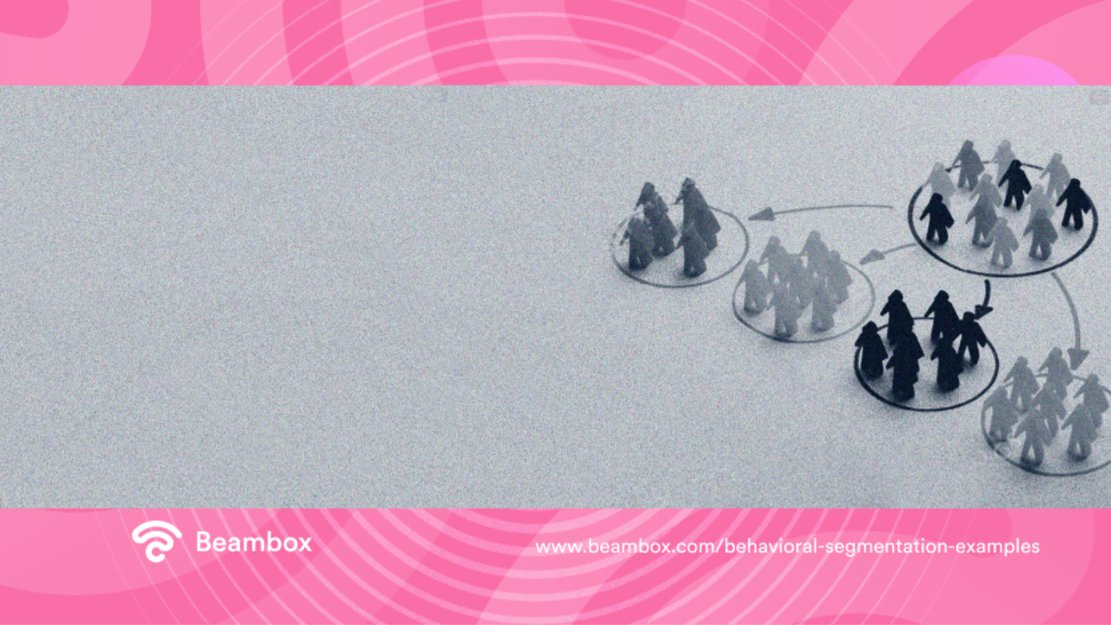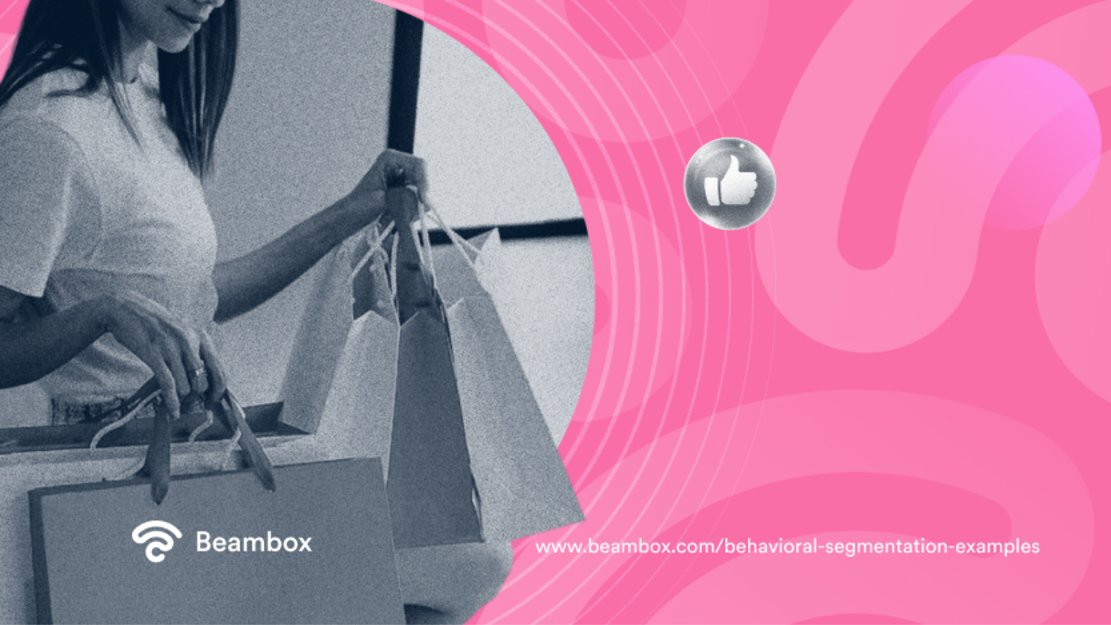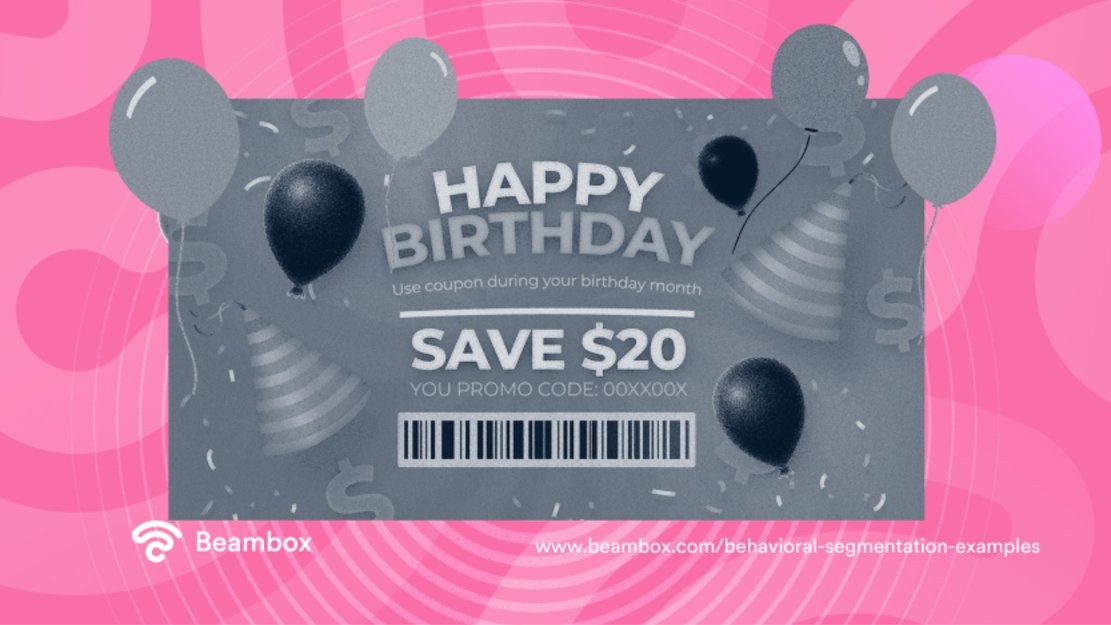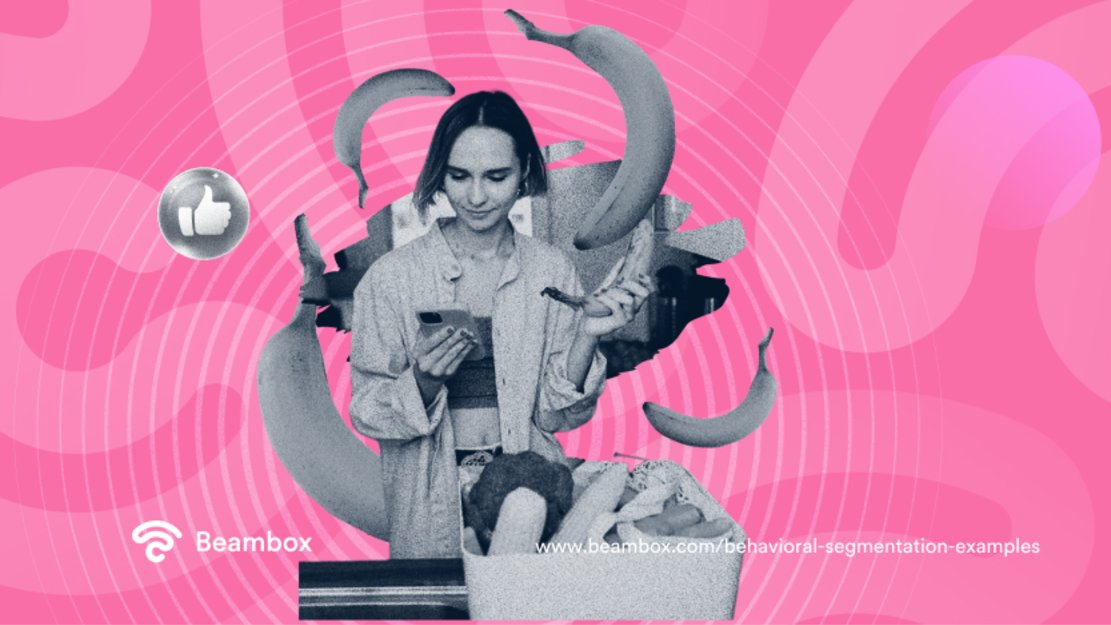Do you want a precise picture of how your customers think and behave? Then you need to segment your audience. However, moving from theory to practice can be hard. These behavioral segmentation examples will set you on the right track.
Take Curology, for instance. It is a famous beauty brand that implements behavioral segmentation to offer personalized shopping experiences based on customers’ skin types.
Curology lets customers choose their skin type and specific concerns. Then it uses this data to create a custom formula tailored to the specific customer. This gives the brand authority, which is one of the main reasons for the brand’s popularity.
Keep reading this article if you are interested in similarly using customer data. You will find many behavioral segmentation examples to take inspiration from. You will also discover the best data collection tools and specific examples for the food industry.
What Are the Different Types of Segmentation?

You must first understand what segmentation is to get the most out of these behavioral segmentation examples.
Segmentation in marketing means dividing a large group of consumers into smaller groups based on their similarities. These smaller groups of customers, called segments, have similar characteristics, needs, or behaviors. Out of these clusters, you can build customer profiles that can improve the efficiency of your marketing strategy.
Now that you know what segmentation is, let’s look at some of its types.
-
Psychographic Segmentation: It focuses on customers’ lifestyles, personalities, values, interests, attitudes, and behavior patterns. It aims to understand the psychological and emotional aspects that drive consumer decisions..
-
Demographic Segmentation: It divides the market based on demographic variables such as age, gender, income, occupation, etc. Demographic segmentation is one of the most common and straightforward segmentation approaches.
-
Behavioral Segmentation: It divides the market based on customers’ behavior, such as the occasion or timing of the response. We will discuss this type of segmentation in detail in the next section.
-
Geographic Segmentation: It involves dividing the market based on geographical factors, such as location, climate, region, population density, etc. This segmentation is helpful when targeting customers with unique needs or preferences based on location.
What Is Behavioral Segmentation? The Core Concepts You Need To Understand
Behavioral segmentation is a marketing strategy that divides a market into distinct groups based on behavior and actions. It also includes customer interaction patterns with products, services, or brands. This type of segmentation is at the core of behavioral marketing.
To execute this type of segmentation, you need to consider purchase behavior, product usage, brand loyalty, benefits sought, etc. We will look at each of these individually later in this article. However, it is all about what people do.
Marketers can better understand their customers and tailor their marketing efforts to meet their needs by analyzing behaviors.
You can enhance customer satisfaction and build stronger relationships with your target audience by delivering relevant offerings. Moreover, understanding customer behavior helps you identify product or service enhancement opportunities. This can drastically decrease your marketing churn rate.
Let’s look at a short behavioral segmentation example. A smartphone company notices that some customers consistently upgrade to the latest model. It also shows that another group of customers prefers to wait and continue using their current devices until they become outdated. Here’s how segmentation can help this company.
Knowing the behavior, it can target early adopters with exclusive pre-order offers and special discounts and emphasize the latest features and technology. For the conservative segment, it can focus on customer loyalty programs and extended warranty options and highlight the longevity and durability of its devices.
Psychographic and Behavioral Segmentation Examples to Segment Your Audience the Right Way
According to a study, 76% of consumers marked personalization as the critical factor in their purchasing decision. This shows that understanding customer preferences and behaviors enables you to generate more revenue and drive customer satisfaction.
But how can you understand your customer on such a deep level? By dividing them into groups and understanding their behavior, you can tweak your marketing efforts accordingly.
As mentioned earlier, behavioral and psychographic segmentation differ because they consider different aspects. Either the behavior or the lifestyle of customers.
In the following sections, you will find a few psychographic and behavioral segmentation examples that clarify the concept furtherly. However, as the main theme of the article is behavioral segmentation, most instances will focus on that.
Basic Examples of Psychographic Segmentation
Before discussing behavioral segmentation examples, let’s see a few psychographic segmentation metrics you can use. This type of clustering is huge, therefore, to have a comprehensive view of the subject, you should read more about psychographic marketing. This segmentation divides people into groups based on their personality, values, interests, lifestyle, and opinions. Here are four examples:
-
Personality Traits: Some people are adventurous and like exciting activities, while others are introverts and prefer quiet hobbies. Outdoor gear companies can target the adventurous group with products that emphasize excitement. And a bookstore can focus on the introverted group with cozy reading areas.
-
Values and Beliefs: An environmentally friendly company can target people who care about the environment. They can highlight their green practices, use recyclable packaging, and support environmental causes to attract this group.
-
Interest and Hobbies: A sports equipment company can create marketing campaigns for soccer players, tennis enthusiasts, and runners. However, tailoring the messages to each group’s interests is essential.
-
Lifestyle and Social Class: A luxury car company might target wealthy individuals who value luxury and status symbols. They can highlight the premium features and exclusivity of their brand.
Let’s now dive deeper into behavioral segmentation with four dedicated examples.
Behavioral Segmentation Example #1: How Often Do They Purchase?

Let’s start this behavioral segmentation examples list with a segmentation that considers the frequency of customer purchases. There are three most common types of buyers; frequent, occasional, and people who buy just once from a particular brand. By segmenting these customers, you can make better decisions to improve your relationship with them. Let’s look at these in detail.
Frequent buyers are loyal customers who make regular weekly or monthly purchases. You can offer them rewards, subscriptions, and targeted promotions to maintain their loyalty toward your business.
Occasional buyers purchase less frequently due to lower needs or engagement with your brand. They make irregular purchases, often on specific occasions. To encourage repeat purchases, you can use targeted marketing efforts. These may include promotions with a limited time, personalized recommendations, and reminders for upcoming events or occasions.
Lastly, some individuals have made a single purchase from you. They may be people buying for the first time or individuals with a limited relationship with your brand. Nurture this segment with content that resonates with them. Plus, try other strategies like special offers and vouchers.
Behavioral Segmentation Example #2: What’s Their Usage?
Another behavioral segmentation example is customer usage patterns. By analyzing how customers use a product or service, you can identify different segments based on their usage behaviors. These segments include heavy users, moderate users, and occasional users.
Let’s assume you own a software house for this example.
Heavy users derive significant value from your product or service. They spend ample time using it, make frequent purchases, and extensively utilize advanced features. You can offer advanced training, premium features, or loyalty programs to cater to their needs and encourage continued usage.
Moderate users utilize your product or service regularly but less intensively than heavy users. They have specific purposes or tasks for which they find value in the product. You can offer personalized recommendations, tips on additional features, or other incentives.
Occasional users use your product or service infrequently. They have occasional needs or lack consistent engagement. You can target this segment by offering reminders or simplified experiences.
Behavioral Segmentation Example #3: What’s Their Loyalty Level?
After purchase and usage frequency, let’s discuss behavioral segmentation examples based on loyalty. Your customers can have three levels of commitment to your brand: Brand advocates, moderate loyalty, and low loyalty. Let’s see what each one entails.
Brand advocates are highly loyal customers who actively promote and recommend the brand. They spread positive word of mouth through various channels. You can nurture their loyalty by offering exclusive rewards, personalized experiences, and recognition for their advocacy.
Moderately loyal customers are satisfied with the brand and make regular purchases but may not actively promote it. These are like your secret admirers. So, to change them into your marketers, give loyalty incentives and proactive customer support.
Low loyalty includes customers with minimal brand engagement, switching behavior, or dissatisfaction. These are the ones you can lose easily. So, you might have to work harder to retain them. You can address their concerns and make them feel appreciated to improve their loyalty.
Behavioral Segmentation Example #4: Do Occasions Matter for Them?

The significance of occasions is also a behavioral segmentation example. This involves analyzing which customers are more likely to purchase more during special occasions. You can learn about people who buy during events and those who purchase regardless of the occasion. It also has a third category: people who don’t primarily make occasional purchases but take advantage of them. Let’s understand each segment individually now.
The first category prioritizes purchases for holidays, birthdays, or anniversaries. You must pay particular attention to this category as they want to make the most of special times. To target this segment, you can offer promotions specific to occasions, personalized recommendations, and timely reminders to cater to their needs.
The second category makes buying decisions based on personal needs and preferences rather than specific events. However, you must still appeal to them as they generate the most revenue. You can focus on innovating and improving products and creating messaging that provides value
The last category is a mix of both. This means that not all their purchases occur during events, but they take advantage of them. You can target this segment by offering promotions with a time limit to create a sense of urgency and exclusive occasion discounts.

After looking at these behavioral segmentation examples, you must wonder, “What tools can I use to gather the data?” If so, keep reading, as this section will guide you through various tools and methods for behavioral segmentation.
-
Surveys and Questionnaires: The best way to collect user data is simply by asking them for it. You can conduct surveys online, through email, or personally. They can include questions about purchasing habits, product usage, brand preferences, and other relevant aspects.
-
WiFi Marketing Software: When you provide free WiFi to your customers, you can gather data straight from them and their online behavior. This is one of the best ways to gather powerful insights. However, you can’t do that effectively without WiFi marketing software.
-
Customer Feedback and Reviews: Analyzing customer feedback, reviews, and ratings can provide valuable insights.
-
Social Media Analytics: Social media platforms offer valuable customer behavior information. Social listening tools like Hootsuite, Sprout Social, etc., can track mentions, conversations, and sentiments about a brand or industry.
-
Customer Relationship Management (CRM) Systems: CRM systems store customer data and interactions, which you can analyze to identify behavioral patterns. This includes purchase history data, customer support interactions, feedback, and engagement with marketing campaigns.
-
Website Analytics: Web analytics, such as Google Analytics, can provide valuable insights into customer behavior on a company’s website. It can track metrics like page views, time spent on site, and conversion rates, helping identify patterns and behaviors.
-
Purchase Data Analysis: Analyzing transactional data, such as POS systems or ecommerce platforms, can reveal valuable insights about customer behavior.
It’s important to note that combining these tools is the best way to gather behavioral segmentation data.
Let’s Get Practical: A Behavioral Segmentation Example in the Food Industry

After reading all the behavioral segmentation examples above, you have a few hints on how to cluster your audience. However, let’s make things more practical with a specific example of the application. This is a behavioral segmentation example in the food industry.
Let’s consider two segments: people who are conscious about their health and prioritize convenience.
The first segment wants to maintain a healthy lifestyle by making nutritious choices. It prioritizes fresh and organic food options. It is actively seeking out information about products’ nutritional content and ingredients. Moreover, they may follow diets like vegetarian, vegan, or paleo.
To appeal to this segment, highlight the food products’ nutritional benefits and organic nature. Provide detailed dietary information and ingredient lists. Additionally, offer specialized menus or sections for different dietary preferences.
Now let’s move on to the second segment, whose primary concern is convenience. This segment often has busy schedules and limited time for meal preparation. So, it wants to save time and prefers food that is ready to eat. This group may frequently order takeout or use food delivery services.
Your marketing strategy for this segment can be offering pre-packed meals or meal kits requiring minimal preparation. Promote quick and easy recipes using the food products. Furthermore, collaborate with food delivery platforms and provide exclusive discounts for online orders.
Take Inspiration From These Behavioral Segmentation Examples To Start Segmenting Your Customer Base
In conclusion, behavioral segmentation means dividing customers based on their behavior.
You can use the above behavioral segmentation examples discussed in this article to segment your customers and personalize their experiences. This will encourage them to become loyal to your brand, increasing customer satisfaction and permanent success.
If you want to use WiFi marketing to gather valuable customer data and create targeted behavior segments for your business, try out Beambox.
With Beambox’s WiFi marketing platform, you can effortlessly collect data and learn about your customers with simplified reports and insights. You can also use Beambox to automate your marketing campaigns and enhance your online reputation.
Start your free trial now!
Get Started With Free WiFi Marketing
Beambox helps businesses like yours grow with data capture, marketing automation and reputation management.
Sign up for 30 days free